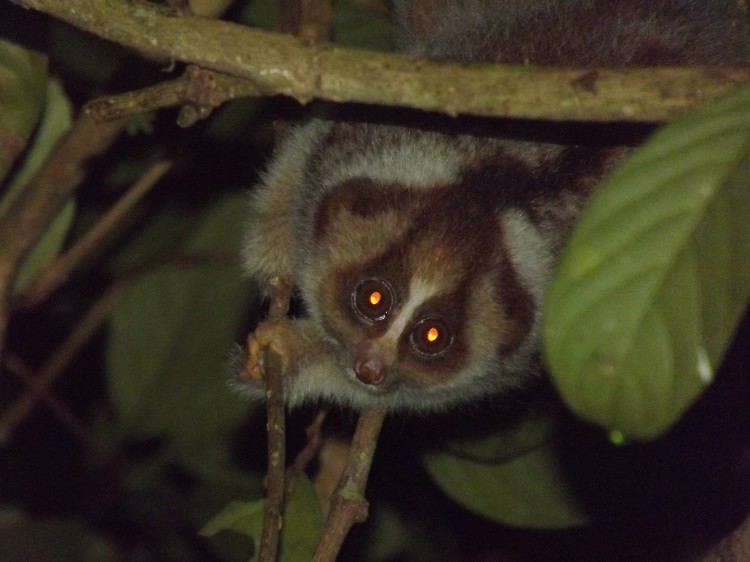Bornean Slow Loris Tagged for First Time
In a first for its species, a male Bornean slow loris has been radio-collared by Malaysian researchers in the Lower Kinabatangan Wildlife Sanctuary in Sabah on the island of Borneo.

Slow loris in Sabah, Borneo. Jmiksanek/Wikimedia Commons
|Updated:





